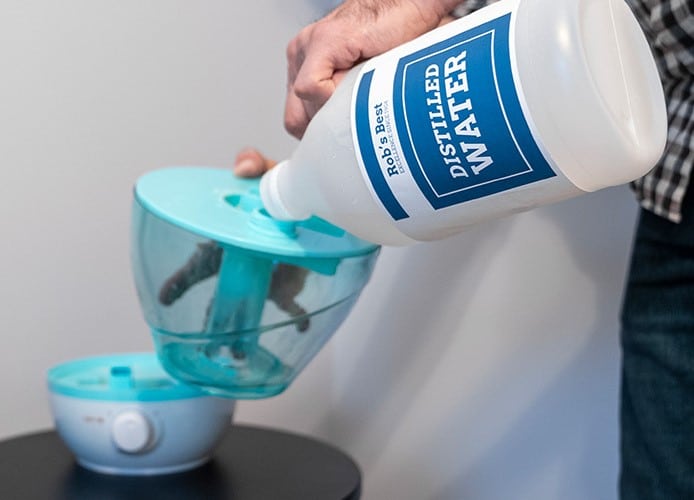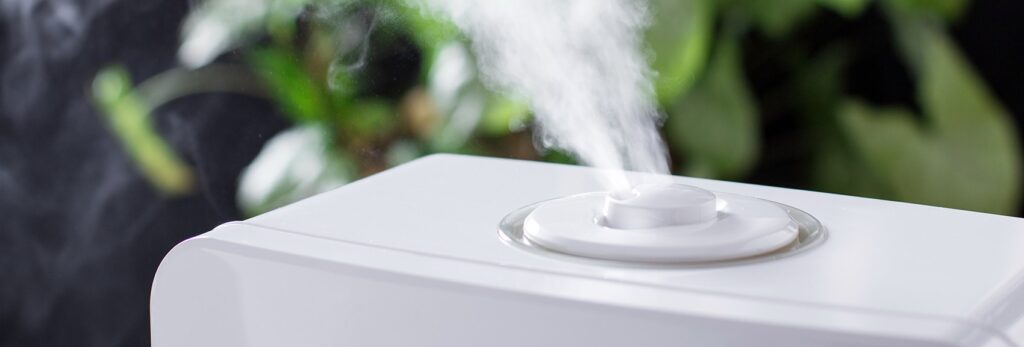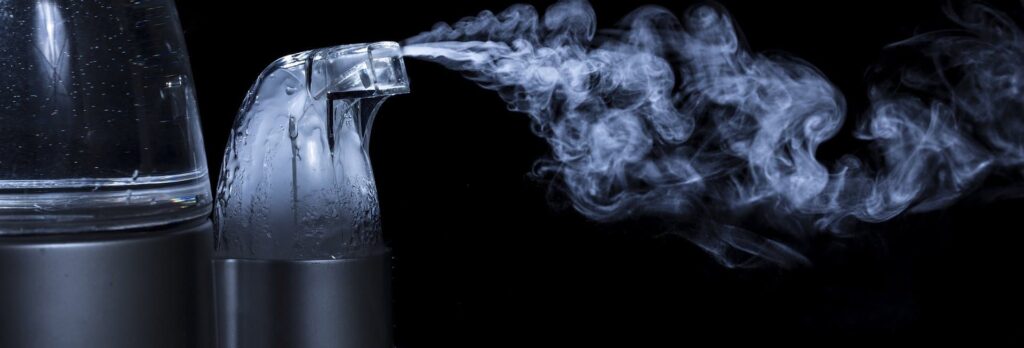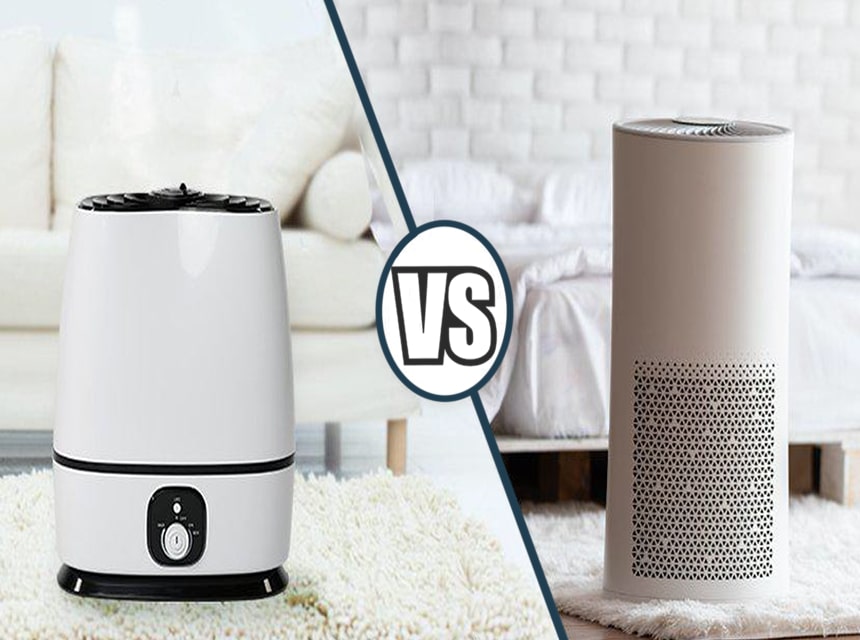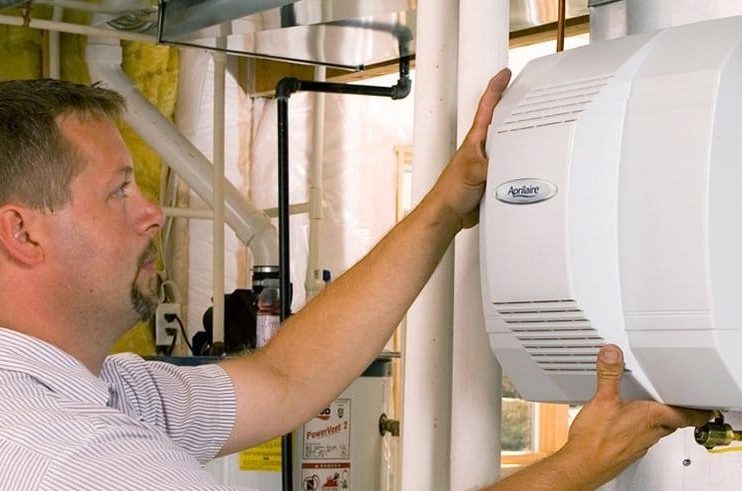Dry air predisposes us to parched skin, nasal congestion, chapped lips, eczema, asthma attacks, dry coughs, and sinus headaches. A humidifier can prevent and relieve these symptoms by increasing moisture levels in your bedroom. This keeps your skin hydrated and prevents snoring by loosening mucus and lubricating your throat. There are different types of humidifiers, including evaporative models which emit steam that destroys harmful microorganisms but could scald you. So, how close should a humidifier be to your bed without posing a risk?
This comprehensive guide explains the different types of humidifier, how each one works to increase humidity levels and the multiple benefits of sleeping with the unit running. The ideal placement will depend on the size and type of humidifier you are using. With all the information we have provided, the answer to “how close should a humidifier be to your bed?” should be easy to figure out for the specific model you own.
Yes, you can but just how close should a humidifier be to your bed for safe operation?
A humidifier increases the moisture levels in your bedroom atmosphere to prevent breathing problems and skin issues.
The best place to put a humidifier will depend on the type of model you have since this will influence where it is set up. If you are installing a portable humidifier on your nightstand, then it needs to be three feet away from the bed. For floor-mounted models, it is advisable to position them two feet away from the floor and at least 15 cm away from walls to prevent obstruction of the air flow ducts which could limit emission of moisture.
Further in this guide, we have explained why it is important to keep the recommended distance to enjoy the health benefits provided by a humidifier without it being detrimental to your wellbeing.
Our article mainly focuses on the best place to put humidifiers, but how essential is it and what advantages should you expect when you invest in such a unit?
According to health experts, your indoor humidity levels should be at 30 to 50 percent for optimal breathable air for and to avoid adverse effects on your skin, possessions and the structural integrity of your room.
Our article on suitable humidifier placement locations in your bedroom will help you to avoid the risks involved with sleeping with a humidifier on so you can use it safely to promote healthy air.
What makes steam humidifiers such as warm mist variants unsuitable to operate while you sleep is the steam produced at boiling temperature. If the unit is placed near the bed, it puts you in danger of scalding from the mist landing on your skin or the unit tipping or toppling over.
You also become susceptible to infections and allergies if your humidifier is poorly maintained. Replacing air filters and cleaning the unit regularly can prevent buildup of these harmful microorganisms.
Humidifiers may be dangerous if they are the wrong size for your bedroom. A smaller size would be inadequate in relieving congestion and skin issues while a large one would produce more moisture than necessary and increase growth of mold, cause spillage from condensation and damage appliances and wooden fixtures. This is why you should place a water-resistant cover on the surface before placing the humidifier on it.
Humidifiers are available in three major types; cold mist, warm mist and ultrasonic. They vary in their size, coverage, output and mode of installation. For instance, some units are freestanding and may be moved from one room to another while others are mounted on existing air conditioning systems to humidify the entire house. This is why we have covered different methods of humidifier placement to accommodate models of all kinds.
The first type we will discuss is cool mist models which increase humidity levels by transforming water into vapor through evaporation mechanism.
To avoid proliferation of bacteria and accumulation of white mineral deposits and purify the air in your bedroom, this type of humidifier incorporates demineralization cartridges and filters. They feature adjustable output settings so you can customize the rate of moisture generated to match your demand.
Warm mist models optimize moisture levels in your bedroom by heating water to boiling point and then releasing it into the atmosphere as steam. The high temperature is effective at killing mold and bacteria, thus improving your air quality by providing the best protection against harmful airborne microorganisms.
By increasing the temperature your bedroom, warm mist humidifiers save you money that you would otherwise spend on heaters during winter season. They also run quietly because they don’t use fans.
Another benefit of this kind of humidifier is that it is the best choice for liquid medical inhalants which reduce flu infections, lubricate your throat and alleviates nasal congestion and calming essential oils which soothe you to sleep. Warm mist humidifiers warm the oil to improve diffusion of the aroma.
While it makes the best aromatherapy option, there is a downside to this kind of model; the risk of scalding from the emitted steam which makes it unsuitable for placement in nurseries.
Since warm mist humidifiers typically don’t use air filters that reduce clogging of the unit, they might be prone to buildup of mineral deposits if you use hard water.
The third type is ultrasonic humidifiers which are considered the quietest and safest to use for babies. The white noise emitted is actually beneficial for sleep.
Instead of emitting steam like the one generated by evaporative models, these units utilize ultrasonic technology which involves high frequency vibration that disintegrates water particles to produce fine mist. This increases dispersion of the mist to cover a larger area and since the mist is distributed at room temperature, it will not burn you.
They are the most common type of humidifier and more affordable than warm mist and ultrasonic models.
These models come with an evaporator pad. When dry and warm air passes through the pad, it adds moisture to the air before releasing it back into your bedroom as cool mist. On the other hand, steam models incorporate electric probes to heat the tank water to boiling point and then emit it into your room as steam.
Evaporative humidifiers may be in form of whole house models mounted on your HVAC system and with bypass ducts and damper that are compatible with gas furnaces. They are also available as freestanding units with integrated fans powered to draw and disperse air through the evaporation pad and ductwork.
Whole house humidifiers connect to your water supply and drainage system to ensure uninterrupted operation and low maintenance, and to prevent stagnant water that could provide a thriving breeding ground for growth of mold and bacteria. Comparatively, standalone models come with their own water reservoir to replenish moisture in your room.
To prevent the minerals from hard water from being emitted and deposited on your bed, evaporative humidifiers feature a wick filter that traps them instead. This also prevents clogging of the unit.
Unfortunately, this type of unit tends to be noisy due to the presence of fans. By lowering the fan speed, you can reduce the level of noise output.
One of the most important features to consider when choosing the best humidifier for a bedroom is the coverage area. Each model is designed to cover a specific size of space to optimize efficiency and effectiveness, and this information is denoted in the product description, manual or on the humidifier.
Humidifiers for large rooms are intended to increase moisture levels in expansive areas and typically feature a large profile with high water tank capacity to match the similarly high output demand and extended operation.
The size of the humidifier matters because its output should be suitable for your intended space, including the number of occupants. Using a size larger than recommended can cause dampness and moisture deposit on walls, curtains, furniture and electronic appliances near the humidifier whereas a smaller model would be ineffective at maintaining optimal levels.
Models for nightstands are compact with nozzles that can be directed to target areas. They have a lower coverage and output rate than floor-mounted humidifiers which are more effective at even distribution of moisture throughout the room when installed at the center or in a corner.
Bedroom humidifiers are freestanding units that could be mounted on floors or on a nightstand. They are portable models featuring fans and water reservoirs of varied capacity, easy to install wherever you want to regulate humidity and much more affordable than ducted humidifiers. Let’s look at the pros and cons of each variant.
Floor models: They provide greater coverage and output compared to nightstand units. Manufacturers recommend placing the floor humidifier at a minimum distance of 15 cm from walls and two feet above the floor to improve even distribution of moisture. This serves to allow for free air circulation, limit exposure to any dust on the floor, reduce buildup of the emitted moisture in the areas around the unit, and reduce exposure to distracting noise or lights. Accumulated moisture may ruin your carpet and walls, increase likelihood of mold and mildew and cause slippage and accidental falls if you stumble on the water collected on the floor. You can get around this by adding a water tray underneath the unit to trap the residue and protect your floor or carpet.
The vapor from cool mist models may take a while to integrate into the atmosphere and cause some water particles to condense on the floor. This is why this variant requires higher elevation than other floor-mounted humidifiers.
Nightstand humidifiers are considered a better option for rapid humidification in target areas as long as they are situated a little further from the bed to maintain a safe distance. You may substitute a nightstand for a table where you can place the humidifier at the minimum recommended distance of three feet away from your bed. Remove any items around the humidifier that could be dampened by the moisture emitted and place a tray or other water-resistance container between the table and the unit to collect condensate.
You can find out more information on where to place a humidifier in your bedroom by consulting the product manual included with your purchase for user guidelines and safety precautions for your specific model.
It is advisable to avoid installing a humidifier next to windows where it could be exposed to the sun.
Bedroom humidifiers are equipped with a water reservoir that serves to fuel the unit. Since bacteria thrive in warm and moist temperature, exposure to sunlight provides ideal conditions for growth of bacteria in the water which would then be released into the air.
Whatever your model, keep it away from children’s reach to avoid tripping, tip-over and scalding accidents. Observe the safe distances we mentioned earlier and once the humidifier is running, leave the nursery door open to prevent excessive humidity levels and dampness that would be detrimental to the kid.
Also avoid warm mist which generate steam and noisy units that would interrupt sleep and wake the baby up.
Confirm the designated coverage area to choose the right model for your room. For instance, Vornado Evap40 Evaporative Humidifier is suitable for spaces with maximum coverage of 1,000 square feet. For effective operation, it is available with two 2-gallon removable tanks, 3 fan speed settings and a built-in humidistat. It is made in the U.S. so customer support is within reach.
Always observe the recommended distance for your type of humidifier. Check the manual for instructions on maintenance, compatible products and where to put the humidifier to control humidity.
Ultrasonic models are recommended for nurseries while evaporative humidifiers provide the best choice for large spaces.
The article captures everything you need to know about humidifiers —from benefits, types, humidifier placement, maintenance, and everything between.
We have discussed the best place to put humidifiers in bedrooms, the health benefits they provide and the importance of choosing the right size and type of humidifier to avoid the potential risks of sleeping with one on.
